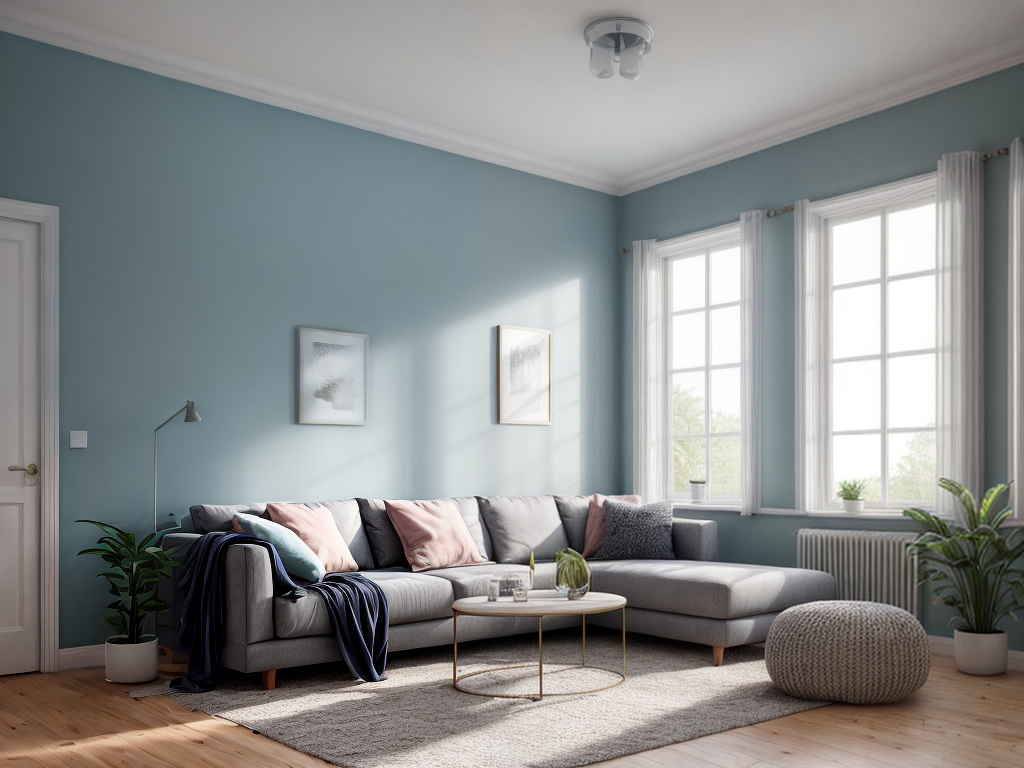I know what you might be thinking – paint labels and formulas? Who cares? But trust me, understanding the science behind paint can make a huge difference in your next home improvement project. In this guide, I will break down the mysteries of paint labels and formulas, helping you navigate through the confusing world of VOC levels, paint bases, gloss levels, and more. By understanding what those labels really mean, you’ll be able to choose the right paint for your project, whether it’s a bedroom makeover or a complete exterior renovation. So, put on your lab coat (just kidding!) and let’s dive into the fascinating world of paint science!
The Importance of Paint Labels
As a consumer, I rely on paint labels to provide me with essential information about the product I am purchasing. The importance of safety and regulatory requirements cannot be overstated when it comes to paint. Paint labels serve as a crucial source of information, ensuring that I am aware of any potential hazards associated with the product. Safety warnings, such as flammability or toxicity, can be easily identified on the label, allowing me to make informed decisions and take necessary precautions. In addition, regulatory requirements dictate that paint labels must include specific details about the product’s composition, such as the presence of volatile organic compounds (VOCs). This information helps me assess the potential impact on air quality and make environmentally conscious choices. Overall, paint labels play a vital role in safeguarding my well-being and enabling responsible consumer choices.
Decoding Paint Formulas
When decoding paint formulas, it is important to understand the chemical composition of the product, as this knowledge builds upon the information provided on paint labels. Decoding paint formulas involves a deep dive into the ingredients used to create the paint. This process helps in understanding paint toxicity and potential health hazards associated with the product. By understanding the chemical makeup of the paint, one can identify any harmful substances present and make informed decisions regarding safety precautions. Certain ingredients, such as volatile organic compounds (VOCs), can contribute to air pollution and have adverse health effects. Therefore, decoding paint ingredients is crucial for those concerned about their health and the environment. It allows consumers to choose paint formulas that align with their values and prioritize safety.
Understanding VOC Levels
When it comes to understanding VOC levels in paint, two important points to consider are the health risks associated with VOCs and the availability of eco-friendly alternatives. VOCs, or volatile organic compounds, can be harmful to human health, causing respiratory issues and contributing to air pollution. However, there are now low-VOC or zero-VOC paints available that offer a safer option for both individuals and the environment.
Health Risks of VOCs
I’ve learned about the health risks associated with VOCs by understanding their levels in paint formulas. VOCs, or volatile organic compounds, are chemicals that easily vaporize at room temperature, releasing potentially harmful gases into the air. These gases can contribute to indoor and outdoor air pollution, posing risks to our health and the environment. High levels of VOCs in paint can lead to various health problems, including respiratory irritation, headaches, dizziness, and even long-term effects such as organ damage and cancer. It is important to be aware of the VOC levels in paint and choose low or zero VOC options whenever possible to minimize exposure and protect our health. By understanding the health risks of VOCs, we can make informed decisions when selecting paint for our homes and workplaces.
Eco-Friendly Alternatives
One can understand the VOC levels in paint formulas by exploring eco-friendly alternatives. When it comes to choosing paint, there are now many eco-friendly options available that have lower VOC levels. These sustainable alternatives are formulated with natural ingredients, such as plant oils and resins, instead of harmful chemicals. By opting for these paints, not only are you reducing the health risks associated with VOCs, but you are also making a positive impact on the environment. These eco-friendly paints are not only better for your health, but they also have the added benefit of being biodegradable and non-toxic. So, next time you’re in need of a fresh coat of paint, consider the sustainable alternatives that can provide both vibrant colors and peace of mind.
Different Types of Paint Bases
I have found that there are several common types of paint bases available on the market. The most common types include water-based, oil-based, and latex-based paints. Each of these paint bases has its own unique characteristics and advantages. Water-based paints, for example, are easy to clean up and have low levels of volatile organic compounds (VOCs), making them environmentally friendly. On the other hand, oil-based paints provide a durable and glossy finish, but they take longer to dry and require solvents for clean-up. Latex-based paints, which are a type of water-based paint, offer excellent adhesion and flexibility, making them suitable for a variety of surfaces. It is important to consider the different types of paint finishes and the pros and cons of different paint bases when choosing the right paint for your project.
The Role of Pigments in Paint
As a paint enthusiast, I’ve come to appreciate the significance of pigment color selection in paint. The pigments used not only determine the hue and vibrancy of the paint, but they also play a crucial role in its overall quality and durability. It’s important to consider the environmental impact of the pigments chosen, as some may contain harmful chemicals or have a high carbon footprint.
Pigment Color Selection
The selection of pigment colors plays a crucial role in the formulation of paint. When it comes to pigment color selection, there are two main factors to consider: color psychology and the choice between natural and synthetic pigments. Color psychology is the study of how different colors affect our emotions and behavior. It is important to choose pigments that align with the desired psychological impact of the paint. Additionally, there is the choice between natural and synthetic pigments. Natural pigments are derived from minerals, plants, or animals, while synthetic pigments are created through chemical processes. The decision between the two depends on factors such as color stability, lightfastness, and environmental impact. By carefully considering color psychology and the nature of pigments, the formulation of paint can be optimized to achieve the desired visual and emotional effects.
Impact on Paint Quality
When formulating paint, the pigments used have a significant impact on the overall quality of the paint. The choice of pigments directly affects paint durability and paint adhesion. Pigments are responsible for giving paint its color, but they also contribute to other important properties. For example, certain pigments can enhance the durability of paint, making it more resistant to wear and fading over time. Pigments can also affect the adhesion of paint to different surfaces. Some pigments have better adhesion properties, ensuring that the paint sticks securely to the surface and doesn’t peel or flake off easily. It is crucial to select the right pigments when formulating paint to achieve the desired quality and performance.
Environmental Considerations
Continuing from the previous subtopic, I wanted to delve into the environmental considerations of paint, specifically the role of pigments. When it comes to sustainability practices and eco-conscious manufacturing, the choice of pigments in paint plays a crucial role. Pigments are responsible for giving paint its color, but they can also have a significant impact on the environment. Many traditional pigments contain heavy metals, such as lead or cadmium, which are harmful to human health and the ecosystem. However, with the advancement of technology and growing awareness, manufacturers are now developing pigments that are free from toxic metals. These environmentally friendly pigments are made using sustainable practices and eco-conscious manufacturing methods, ensuring that paint not only beautifies our spaces but also minimizes its impact on the planet.
Navigating Gloss Levels
As I delve into the science of paint and its various formulations, I find it crucial to understand the different gloss levels in order to achieve the desired sheen. When comparing gloss levels, it is important to consider the amount of light that is reflected off the painted surface. Higher gloss levels, such as gloss and semi-gloss, reflect more light and create a shiny finish. On the other hand, lower gloss levels, like satin and matte, reflect less light and produce a more subtle sheen. Understanding these differences allows painters to choose the appropriate gloss level for their specific project, whether it be a high-shine finish for a modern look or a more muted sheen for a rustic feel. By navigating gloss levels effectively, painters can achieve the desired aesthetic outcome.
Choosing the Right Paint for Your Project
To choose the right paint for my project, I rely on the expertise of professionals and the information provided on paint labels. One important factor I consider is color psychology and paint selection. Different colors can evoke different emotions and moods, so I take the time to understand the psychological impact of each color before making a decision. Additionally, I pay attention to the techniques for achieving a smooth paint finish. This involves proper preparation of the surface, such as sanding and priming, as well as using the right tools and application methods. By following these guidelines, I can ensure that my paint job not only looks visually appealing but also creates the desired atmosphere in the space I am painting.
Conclusion
In conclusion, understanding the science behind paint labels and formulas is crucial for any DIY enthusiast or professional painter. By decoding paint formulas, considering VOC levels, and selecting the right paint base and gloss level, you can ensure a successful and long-lasting paint job. So, next time you embark on a painting project, remember to crack the code and choose the perfect paint for a picture-perfect finish.




